Hypersonic speed cruise missiles and glide vehicles travels at least five times the speed of sound (Mach 5). Also, low-altitude cruising systems reduces the reaction time interval of target area's air defense systems to a minimum.
In addition to these two strategic advantages (speed of reaching to the target and detectability difficulty), high maneuverability even just after boost phase, and precision strike capability have prompted many countries to work in this field. Some of these systems are missiles that have been in service for a long time, and many more are under development. Under this thread, I hope to be able to take a closer look at the work of the countries, the status of the ongoing projects and these work's possible diplomatic effects.


To summarize briefly some systems known in the world and ongoing studies:
In development:
3M22 Zircon,
Scramjet powered maneuvering anti-ship hypersonic cruise missile produced by Russia. The missile represents a further development of the Hypersonic Experimental Flying Vehicle (HELA) developed by NPO Mashinostroyeniya. The missile is speculated to have a maximum engagement range of up to 930 miles. In May 2022, the Russian ministry of defense shared a video, announcing a successful test fire against a target 1000 km away.

AGM-183 ARRW,
Air-Launched Rapid Response Hypersonic Weapon System, planned for use by the USAF. (Aka Super-Duper Missile, as described by Trump)
The weapon uses a boost-glide system, in which it is propelled to hypersonic speed by a rocket on which it is mounted before gliding towards a target. Although the project struggled with many problems, a successful firing test was finally achieved in May 2022.
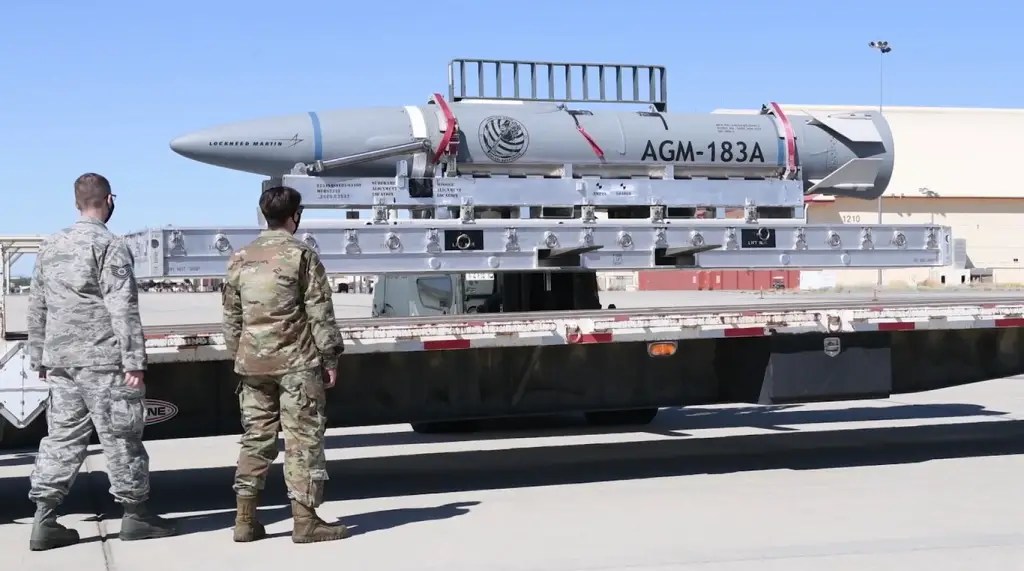
BrahMos-II,
BrahMos Mark II is a hypersonic cruise missile currently under joint development by India's Defence Research and Development Organisation and Russia's NPO Mashinostroyenia. The planned operational range of the BrahMos-II had initially been restricted to 290 kilometres as Russia is a signatory to the Missile Technology Control Regime (MTCR). Testing was planned to start in 2020, but there were many delays in the project. Still, it is estimated that India has made significant progress in the project, as of 2022.

FC/ASW or FMAN/FMC,
This missile program launched by France and the United Kingdom to develop a missile system to replace their jointly-developed Storm Shadow/SCALP as well as their respective Exocet and Harpoon anti-ship missiles. FC/ASW is a stealth hypersonic cruise missile concept study undertaken by MBDA, in consultation with the Royal Navy and French Navy. The operational range target is 300km, and it proceeds on a ramjet propelled design. The missile will be VLS launched and is compatible with the American Mark 41 and the French A70 Sylver VLS . The project is still in the design phase.

HSTDV,
The HSTDV is an unmanned scramjet demonstration aircraft for hypersonic speed flight. It is being developed as a carrier vehicle for hypersonic and long-range cruise missiles, and will have multiple civilian applications including the launching of small satellites at low cost. The HSTDV program is being run by the Defence Research and Development Organisation (DRDO).
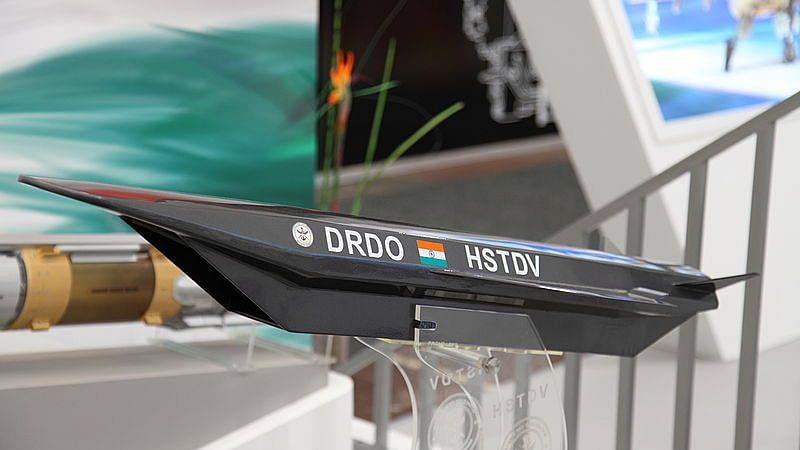
Hwasong-8,
The Hwasong-8 is a North Korean missile claimed to be mounting a hypersonic glide vehicle, which was first tested on 14 September 2021. The first launch occurred in September, in a month with a total of four missile launches. As it is supposed to be a hypersonic missile, also its estimated operational range is expected to reach up to 6000km.
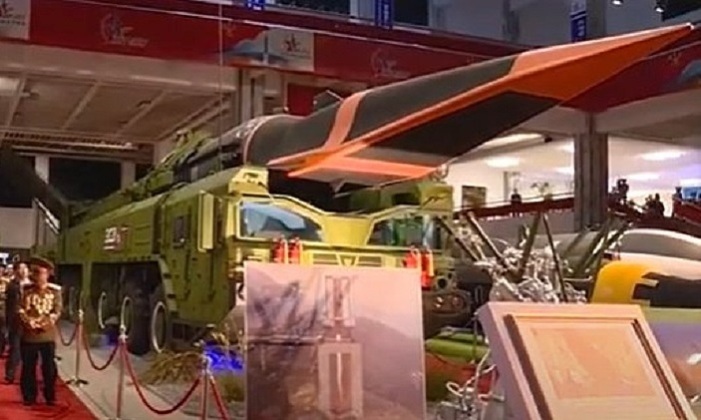
HAWC,
The Hypersonic Air-breathing Weapon Concept (HAWC) is a scramjet powered air-launched hypersonic cruise missile project at the U.S. Defense Advanced Research Projects Agency (DARPA), that had a successful hypersonic flight announced in September 2021. It is a kinetic energy weapon, without an explosive warhead. >300 mi is targeted for operational range.
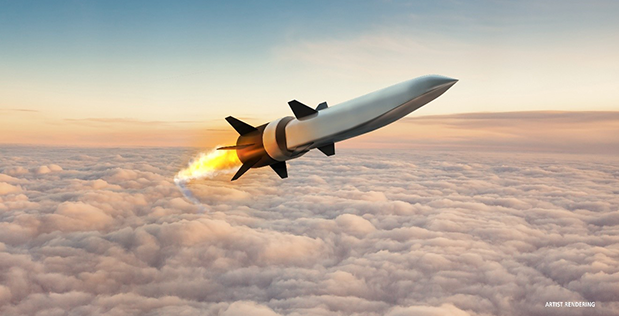
LRHW,
The Long-Range Hypersonic Weapon (LRHW) is a surface-to-surface hypersonic missile planned for use by the United States Army. The United States Navy intends to procure a ship/submarine-launched variant of the missile as part of the service's Intermediate-Range Conventional Prompt Strike (IRCPS) program. The weapon consists of a large rocket booster that carries the unpowered Common-Hypersonic Glide Body (C-HGB) in a nose cone. Once the booster reaches significant altitude and speed, it releases the C-HGB, which glides at hypersonic speeds as it descends towards its target. The system is expected to be included in the active inventory next year.
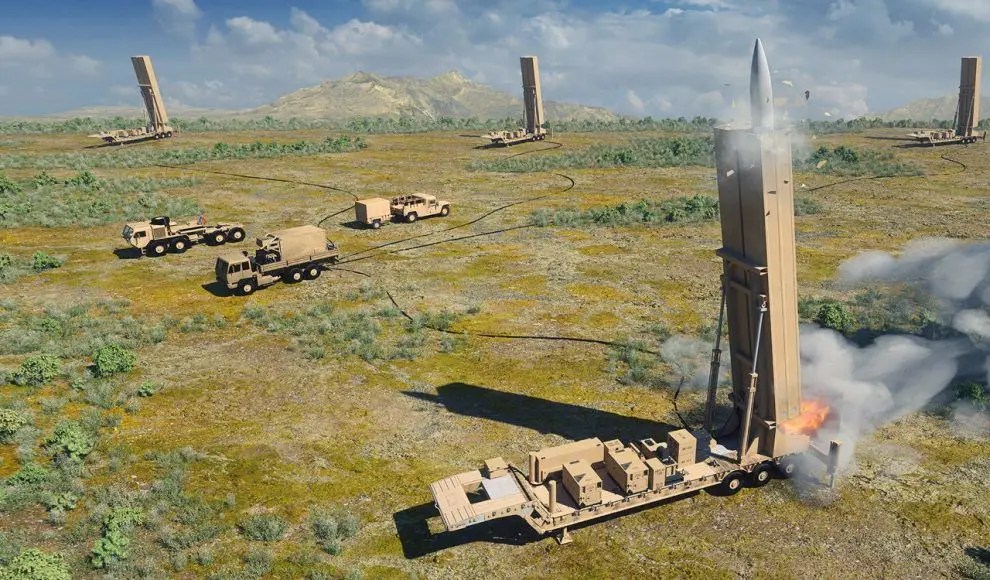
SCIFiRE,
Southern Cross Integrated Flight Research Experiment is an American-Australian military technology partnership that is developing a solid-rocket boosted, air-breathing, hypersonic conventional cruise missile that can be launched by existing fighter or bomber aircraft. The missile is expected to enter service between 2026-2031.

In operational status:
Kh-47M2 Kinzhal,
KH-47M2 is a Russian nuclear-capable hypersonic aero-ballistic air-to-surface missile. It has a claimed range of more than 2,000 km. The Kinzhal entered service in December 2017. During the 2022 Russian invasion of Ukraine, the Russian military said that it used Kinzhal missiles to destroy an alleged underground weapons depot of the Ukrainian armed forces in Deliatyn on 18 March 2022 and a fuel depot in Konstantinovka the next day.

DF-ZF,
The DF-ZF is a Chinese hypersonic glide vehicle (HGV), previously denoted by the Pentagon as WU-14 and currently officially operational on October 1st, 2019. The DF-ZF is thought to reach speeds between Mach 5 and Mach 10. The glider could be used for nuclear weapons delivery but could also be used to perform precision-strike conventional missions, which could penetrate the layered air defenses of a U.S. carrier strike group.

***(The above information is mainly compiled from wiki sources. Since it is the first post of the thread, it serves as a general summary. There may be some errors, so I appreciate your understanding in advance.)
In addition to these two strategic advantages (speed of reaching to the target and detectability difficulty), high maneuverability even just after boost phase, and precision strike capability have prompted many countries to work in this field. Some of these systems are missiles that have been in service for a long time, and many more are under development. Under this thread, I hope to be able to take a closer look at the work of the countries, the status of the ongoing projects and these work's possible diplomatic effects.
To summarize briefly some systems known in the world and ongoing studies:
In development:
3M22 Zircon,
Scramjet powered maneuvering anti-ship hypersonic cruise missile produced by Russia. The missile represents a further development of the Hypersonic Experimental Flying Vehicle (HELA) developed by NPO Mashinostroyeniya. The missile is speculated to have a maximum engagement range of up to 930 miles. In May 2022, the Russian ministry of defense shared a video, announcing a successful test fire against a target 1000 km away.

AGM-183 ARRW,
Air-Launched Rapid Response Hypersonic Weapon System, planned for use by the USAF. (Aka Super-Duper Missile, as described by Trump)
The weapon uses a boost-glide system, in which it is propelled to hypersonic speed by a rocket on which it is mounted before gliding towards a target. Although the project struggled with many problems, a successful firing test was finally achieved in May 2022.

BrahMos-II,
BrahMos Mark II is a hypersonic cruise missile currently under joint development by India's Defence Research and Development Organisation and Russia's NPO Mashinostroyenia. The planned operational range of the BrahMos-II had initially been restricted to 290 kilometres as Russia is a signatory to the Missile Technology Control Regime (MTCR). Testing was planned to start in 2020, but there were many delays in the project. Still, it is estimated that India has made significant progress in the project, as of 2022.

FC/ASW or FMAN/FMC,
This missile program launched by France and the United Kingdom to develop a missile system to replace their jointly-developed Storm Shadow/SCALP as well as their respective Exocet and Harpoon anti-ship missiles. FC/ASW is a stealth hypersonic cruise missile concept study undertaken by MBDA, in consultation with the Royal Navy and French Navy. The operational range target is 300km, and it proceeds on a ramjet propelled design. The missile will be VLS launched and is compatible with the American Mark 41 and the French A70 Sylver VLS . The project is still in the design phase.

HSTDV,
The HSTDV is an unmanned scramjet demonstration aircraft for hypersonic speed flight. It is being developed as a carrier vehicle for hypersonic and long-range cruise missiles, and will have multiple civilian applications including the launching of small satellites at low cost. The HSTDV program is being run by the Defence Research and Development Organisation (DRDO).

Hwasong-8,
The Hwasong-8 is a North Korean missile claimed to be mounting a hypersonic glide vehicle, which was first tested on 14 September 2021. The first launch occurred in September, in a month with a total of four missile launches. As it is supposed to be a hypersonic missile, also its estimated operational range is expected to reach up to 6000km.

HAWC,
The Hypersonic Air-breathing Weapon Concept (HAWC) is a scramjet powered air-launched hypersonic cruise missile project at the U.S. Defense Advanced Research Projects Agency (DARPA), that had a successful hypersonic flight announced in September 2021. It is a kinetic energy weapon, without an explosive warhead. >300 mi is targeted for operational range.

LRHW,
The Long-Range Hypersonic Weapon (LRHW) is a surface-to-surface hypersonic missile planned for use by the United States Army. The United States Navy intends to procure a ship/submarine-launched variant of the missile as part of the service's Intermediate-Range Conventional Prompt Strike (IRCPS) program. The weapon consists of a large rocket booster that carries the unpowered Common-Hypersonic Glide Body (C-HGB) in a nose cone. Once the booster reaches significant altitude and speed, it releases the C-HGB, which glides at hypersonic speeds as it descends towards its target. The system is expected to be included in the active inventory next year.

SCIFiRE,
Southern Cross Integrated Flight Research Experiment is an American-Australian military technology partnership that is developing a solid-rocket boosted, air-breathing, hypersonic conventional cruise missile that can be launched by existing fighter or bomber aircraft. The missile is expected to enter service between 2026-2031.
In operational status:
Kh-47M2 Kinzhal,
KH-47M2 is a Russian nuclear-capable hypersonic aero-ballistic air-to-surface missile. It has a claimed range of more than 2,000 km. The Kinzhal entered service in December 2017. During the 2022 Russian invasion of Ukraine, the Russian military said that it used Kinzhal missiles to destroy an alleged underground weapons depot of the Ukrainian armed forces in Deliatyn on 18 March 2022 and a fuel depot in Konstantinovka the next day.

DF-ZF,
The DF-ZF is a Chinese hypersonic glide vehicle (HGV), previously denoted by the Pentagon as WU-14 and currently officially operational on October 1st, 2019. The DF-ZF is thought to reach speeds between Mach 5 and Mach 10. The glider could be used for nuclear weapons delivery but could also be used to perform precision-strike conventional missions, which could penetrate the layered air defenses of a U.S. carrier strike group.

***(The above information is mainly compiled from wiki sources. Since it is the first post of the thread, it serves as a general summary. There may be some errors, so I appreciate your understanding in advance.)
Last edited:



